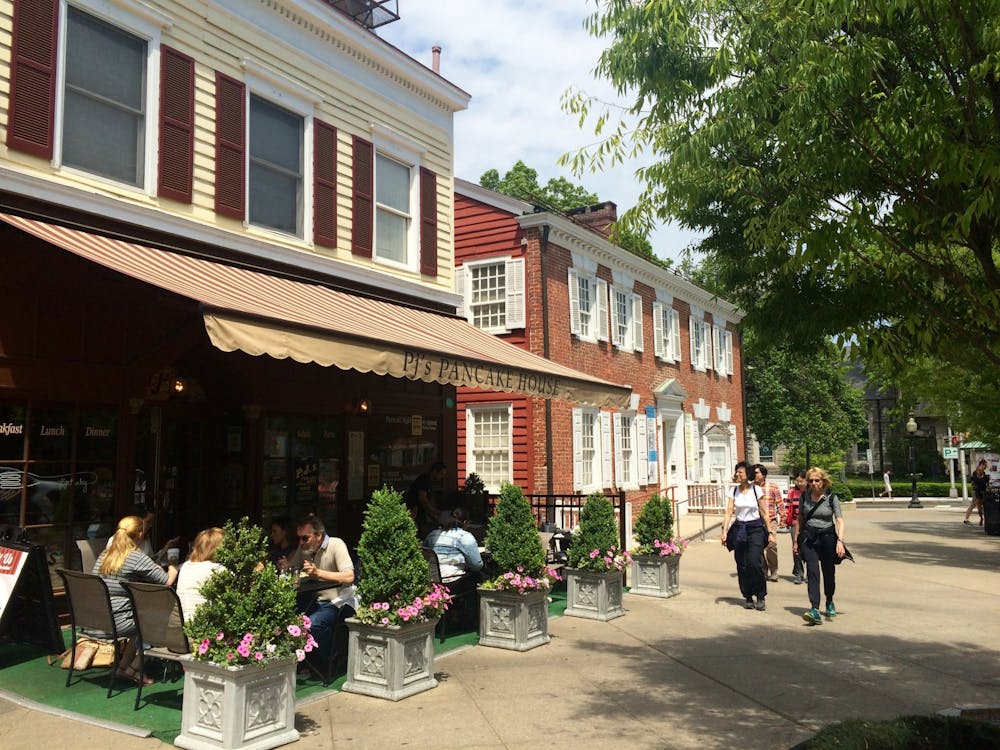A glance at the American culinary scene can attest to the presence of the Eastern European Jews who first arrived at Ellis Island between 1881 and 1924, bringing with them a specialty from home.
Of course the deli has long been the home of bagels and lox, but the recent rise of chains like Einstein Bagels and Panera Bread — where bagels and lox (or at least a schmear of cream cheese with minced lox bits) are a mainstay — has further grafted the fare of the Jewish- American Sunday Brunch on the American table. The leading chefs of American haute cuisine have added bagels and lox to their culinary repertoire — "salmon gravlax with chives and crème fraiche on a buckwheat bilini" essentially translates essentially to "a multigrain bagel with lox and schmear of cream cheese with chives."
But what of the history of the bagel? The word derives from the Yiddish word "beygel," which is rooted in the German word "beugel," and means "bracelet" or "ring." According to bagel lore, it first took its shape when a Jewish Viennese baker made a bread roll in the shape of stirrup ("bugel" in German) out of gratitude for the Polish King John III Sobieski, who saved the city from Turkish invasion in 1683. As for modern history, the bagel sailed to American shores with the wave of Jewish immigrants in the early 20th century. Through the founding of Jewish baker unions, the bagel quickly became a boon for the New York deli scene. But it wasn't until the 1960s that the bagel really consumed all of America — with the advent of industrial processes that enabled the once individually hand-rolled, water boiled, then oven baked dough rings to be rapidly machine produced, freezer-packed, and supermarket supplied. It was then that that the bagel really established its cultural ascendancy.
As for the lox, or "nova"? The term nova refers to Nova Scotia, where some of the best smoked salmon is caught and smoked. The process of smoking of course reaches way back to the dustbins of human history, when our primitive ancestors probably left their killed animal feed to dry in timber rafters to prevent other animals from eating it.
Then, historians attest, after being exposed to the smoke of their cave fire, it was discovered that the food lasted much longer, which thus lead to the process of smoking as a means of preservation. But in more recent culinary history, smoking has been celebrated for the flavors with which it infuses food.
But where to go in Princeton for the best bagel and lox? As a thoroughly "Sunday Brunch bagel and lox Jew" I found this to be the general rule: the further from the University, the better the bagel and lox. Nassau Bagel and Sushi, located next to Thomas Sweets on Nassau Street, received my highest marks, followed by Abel Bagel on Witherspoon Street. Coming in last was the Princeton Dining Hall's Sunday brunch version of bagels and lox.
Nassau Bagel and Sushi's lox was by far the best — it was mildly oily, bright pink, thinly sliced and not overly fishy. This shouldn't be a surprise, as the eatery serves quality raw fish, too. Their bagels were average, but neither of the other two places I tried really understood the art of bagel making. After all, a real bagel should be around five ounces, with a shiny, slightly crunchy crust and dense, moist (but not too doughy) interior. My "everything" bagel met pleasantly plump size requirement, but had a mostly dry, airy interior. However, the lox more than compensated for the Sealy mattress-like bagel. The only other blunder of Nassau Bagel was their store hours — Monday through Saturday; closed on Sundays.
Abel Bagel came in second. It was hidden in little plastic containers for no one to see — or really want, for that matter. Orange, oily, too thick in the center and edges as crisp as Corn Flakes, this place certainly was lagging in the lox department. Their bagels were nothing to write home about, either. They boasted a splendid assortment — cinnamon raisin, honey wheat, bialys and all the other standards — but the "everything" bagel I tried was also mediocre. Too large an "O" in the middle, too little dough to surround it and too dense and chewy — these bagels were hardly able to please a knowing palette.

The dining halls came in last, but trailed extremely close behind Abel Bagel. Their smoked salmon was certainly plentiful, but hardly pleasing. Its deep, ruby red, nearly brown color, thickness, pasty sheen and graying edges don't do much to whet the appetite. Its bagels are not even mediocre — they're miserable. Their enormous size would make Dr. Atkins turn in his grave, and their Styrofoam, dry and tasteless interior hardly match their physical appeal — perhaps their only saving grace. But their bagel beauty is only crust deep, as a crack into the blueberry bagel, for example, will reveal a serious bagel blunder — its purplish color clearly reveals it is the result of artificial coloring. However, what gave the dining halls significant gravitas was not the quality of its bagels or lox (they certainly seem to care more about quantity anyhow), but its mere presence on Sunday for brunch. Bagels and lox have come a long way from their Eastern European and Jewish American roots.








